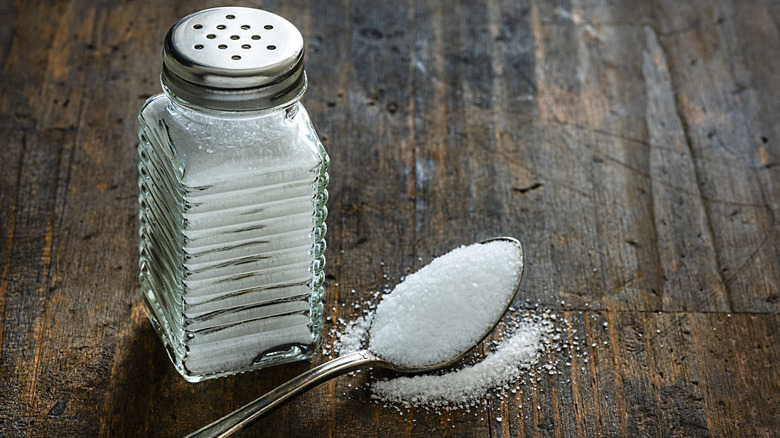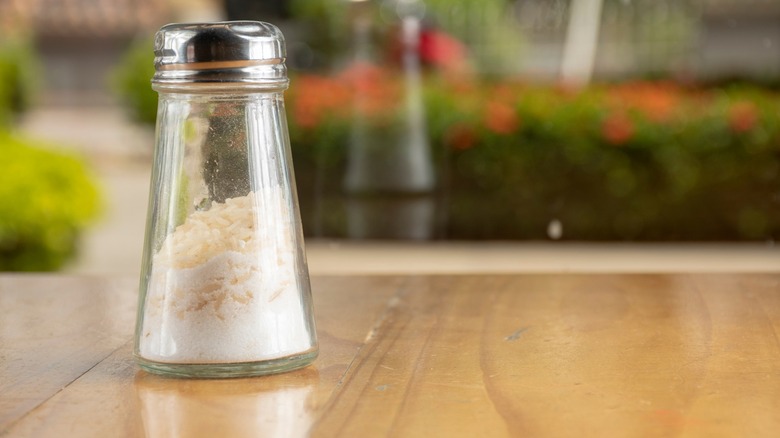Rice Is The Key To Prevent Salt From Clumping
From the simple sprinkle on a freshly sliced tomato to the generous pinch that enhances the taste of a stew, salt remains a constant presence in our kitchens. Yet, there's a common frustration that plagues many cooks and diners alike — the dreaded clumping. Clumped salt can be both a nuisance and a waste, making it challenging to measure accurately or distribute evenly over food. Fortunately, the rice hack offers a simple solution to this age-old problem.
At first glance, rice and salt seem to share little in common besides their status as pantry staples. However, the secret of this hack lies in rice's hygroscopic nature, which means it draws water molecules from the surrounding environment. Therefore, when rice is added to a container of salt, it acts as a natural moisture absorber, taking in the excess humidity that causes those irritating clumps to form in the first place.
But why rice? While there are various commercial hygroscopic products available, rice offers several advantages. First, it's non-toxic and completely food-safe, ensuring no unintended chemicals or substances come into contact with your salt. Second, rice is widely available, making it an accessible option for most. Lastly, when rice absorbs water, it doesn't dissolve in it. Therefore, it won't break down and release the moisture back into the environment. This makes it an ideal moisture absorber in your salt shakers.
Utilizing raw rice in your salt shaker
This rice hack is astonishingly simple. First, ensure your salt shaker is dry. If you've recently washed it, dry it thoroughly. Fill the salt shaker about three-quarters full with salt, then add a few grains of uncooked rice (about ½ teaspoon is sufficient for a standard-sized salt shaker). Seal your shaker and give it a gentle jiggle to mix the rice with the salt.
As you use the salt, the rice grains will remain inside the shaker, continuously working their moisture-absorbing magic. And there's no need to worry about rice grains coming out while seasoning; they're usually too large to pass through the shaker's holes.
While rice is a fantastic tool in the fight against clumpy salt, it's also worth applying other measures to keep salt at its best. Proper storage especially plays a vital role. For instance, it's a good idea to keep salt in an airtight container, especially if you're storing it for extended periods. This prevents the entry of humid air, which might lead to clumping. Furthermore, consider storing your salt in a cool, dry place away from the stove or sink where it would be exposed to steam or splashes of water. With these simple tricks, you can ensure your seasoning flows smoothly, and your dishes taste just right.

